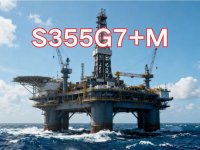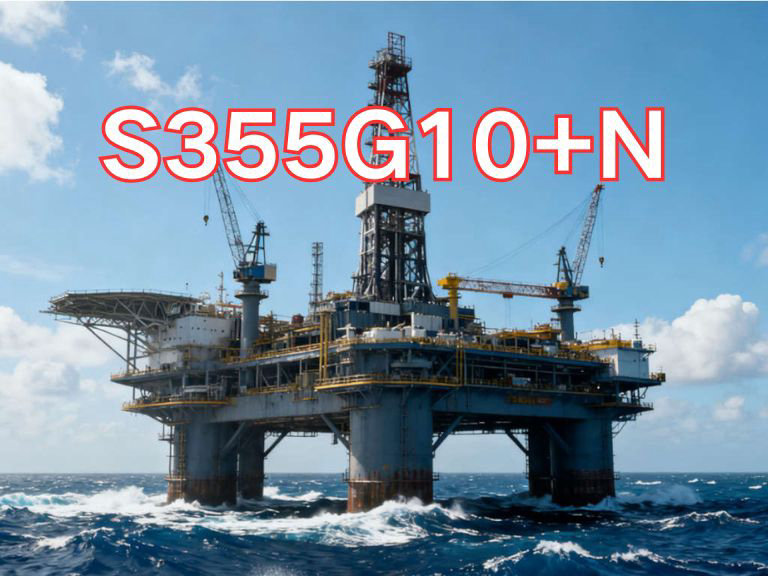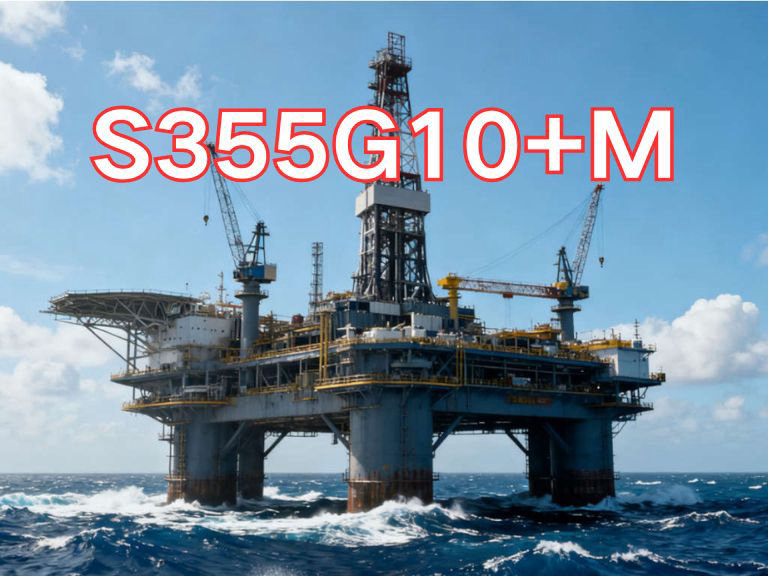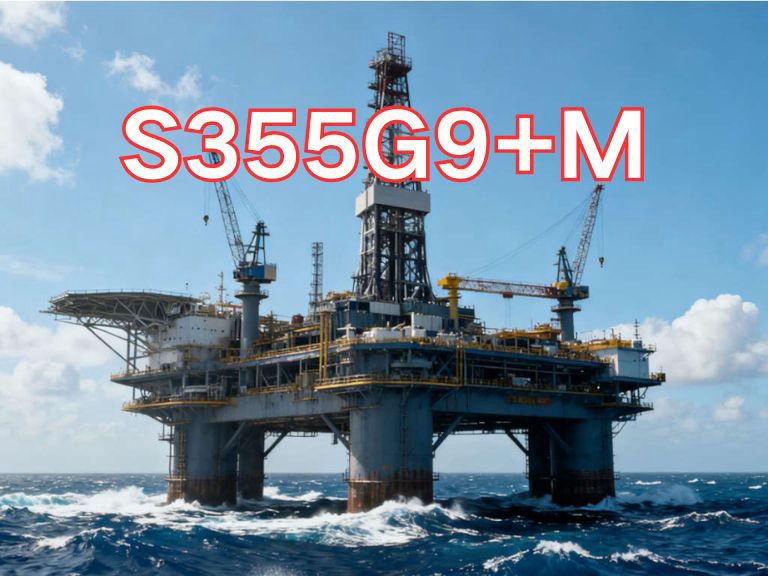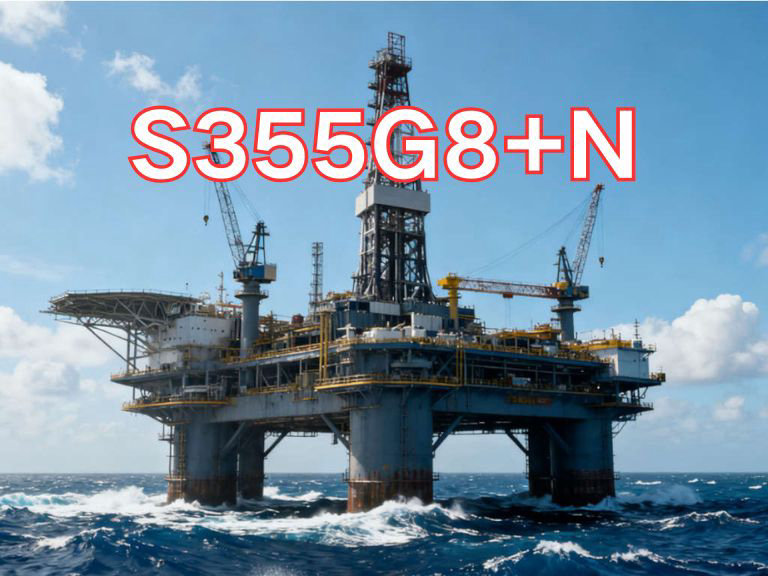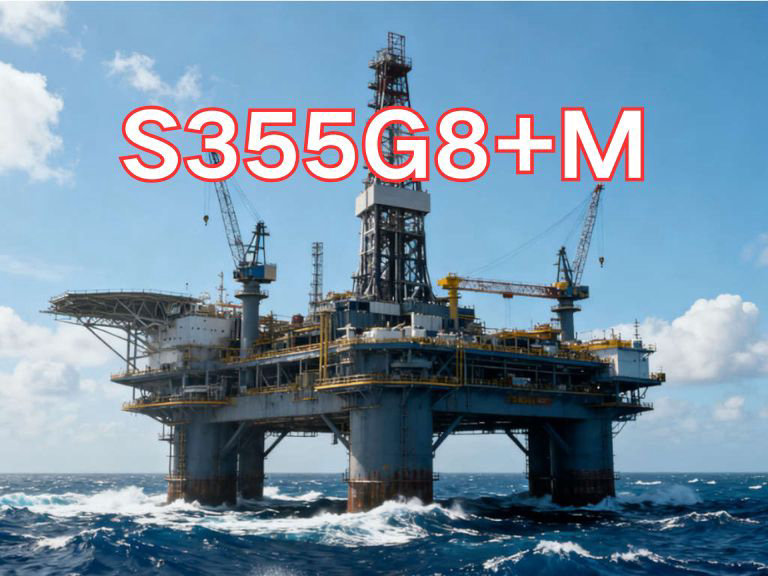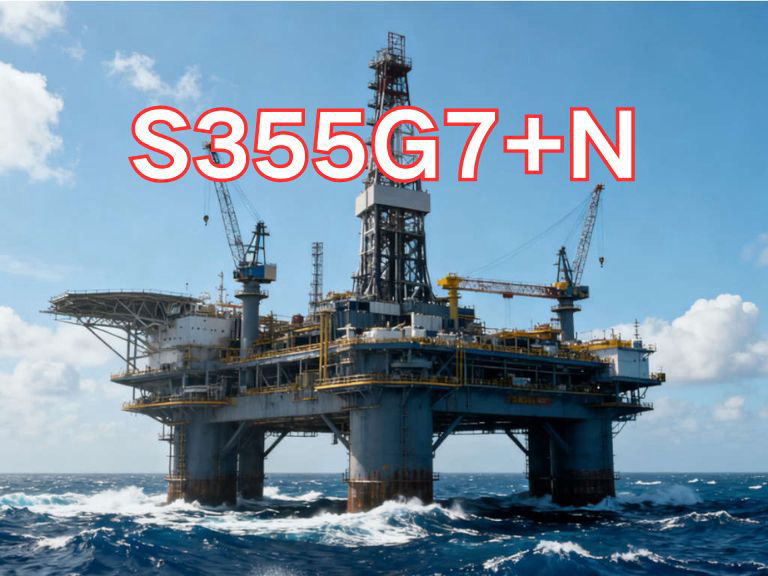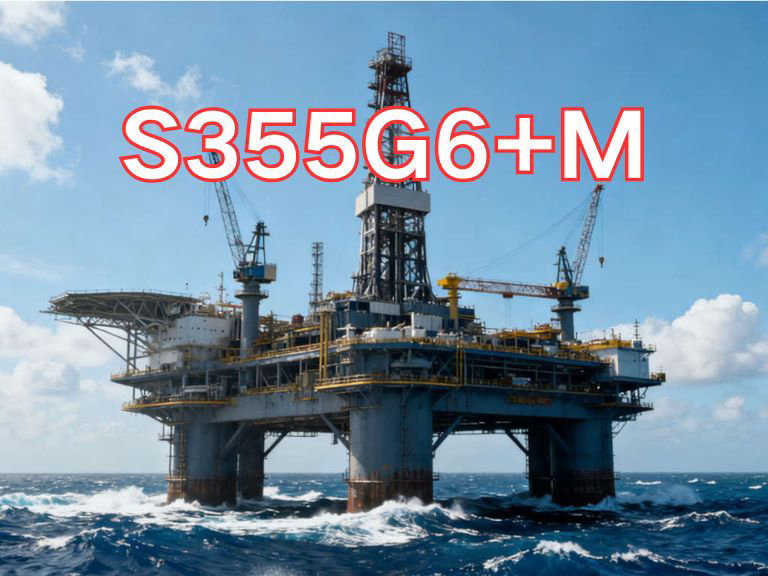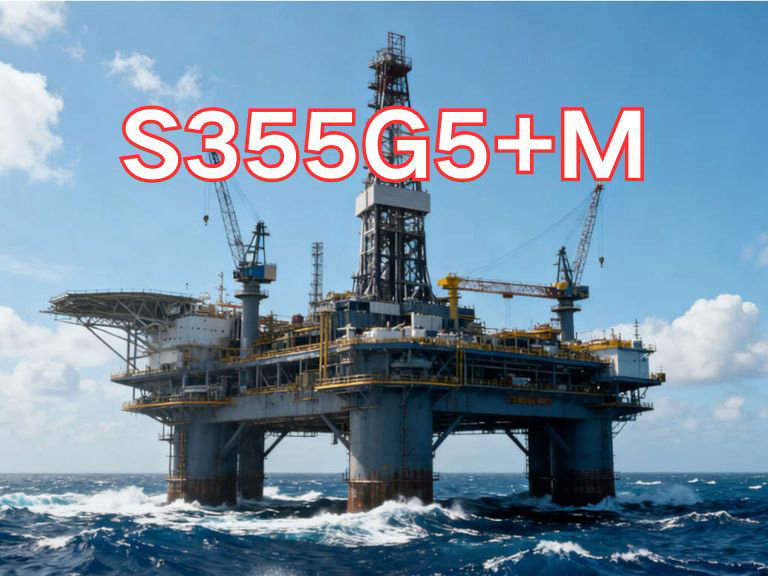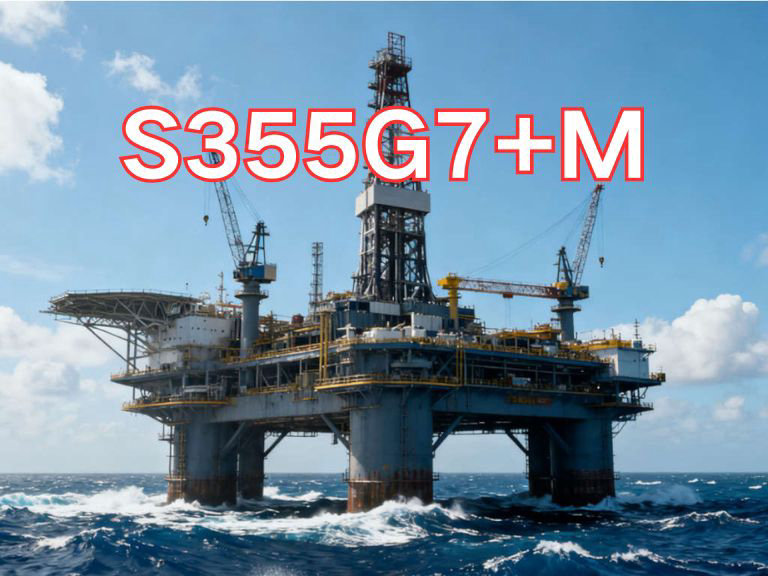

S355G7+M
S355G7+M is a high-strength, ultra-high-toughness steel plate designed specifically for extreme low-temperature environments. Its designation follows the European standard (EN) steel nomenclature system and represents one of the highest grades in terms of low-temperature toughness for structural and offshore applications. The "S" stands for "Structural steel," indicating its use in critical load-bearing and welded structures. "355" denotes the specified minimum yield strength of 355 MPa at room temperature, classifying it as a high-strength grade suitable for components subjected to complex stresses and dynamic loads. "G7" is the highest toughness grade in the series, specifically developed for structural safety in polar and ultra-cold environments. Specifically, the G7 grade requires Charpy V-notch impact testing at -100°C, with an average absorbed energy of no less than 47 J for three specimens and no single specimen below 35 J, demonstrating exceptional resistance to brittle fracture. This makes S355G7+M the ideal material for Arctic polar engineering, support structures for liquefied natural gas (LNG) cryogenic tanks, deep-sea research vessels, and floating production platforms in high-latitude regions operating under extreme cold conditions. The suffix "+M" indicates the delivery condition: thermomechanically controlled processed (TMCP), where precise control of rolling temperature, deformation passes, and accelerated cooling enables significant grain refinement and microstructural strengthening. This process achieves an excellent balance of high strength and ultra-high toughness without significantly increasing the carbon equivalent (CEV), while ensuring good weldability and microstructural uniformity.
The main characteristics of S355G7+M steel plate include high strength, unparalleled cryogenic toughness, excellent weldability, and superior thickness-direction properties. Its chemical composition is based on carbon and manganese, with additions of microalloying elements such as niobium, vanadium, and titanium. Combined with the TMCP process, it forms a fine, uniform microstructure—typically acicular ferrite or low-carbon bainite—effectively enhancing comprehensive mechanical properties. The tensile strength ranges from 470 to 630 MPa, with elongation (A5) ≥20%, providing good ductility and fatigue resistance. Its high impact toughness at -100°C makes it a key material for the most demanding global applications, effectively preventing brittle fracture in extreme cold and ensuring the long-term safety and reliability of offshore installations.
S355G7+M is widely used in cutting-edge engineering fields such as icebreaker hulls, Arctic LNG modular platforms, pressure-bearing structures for deep-sea explorers, and future polar offshore wind projects.
The current standard for S355G7+M steel plate is the European standard EN 10225:2023 "Weldable structural steels for use in offshore structures — Technical delivery conditions for fabricated or rolled products". This standard is specifically tailored for offshore and marine engineering, providing detailed specifications for chemical composition, mechanical properties, impact toughness, manufacturing processes, non-destructive testing, and inspection procedures, including the stringent requirements for the G7 grade. It serves as a core technical reference for modern high-end offshore engineering design and construction. Due to its exceptional performance, S355G7+M has become a strategic key material in polar and extreme-environment marine engineering.

Ultrasonic Testing (UT)
A key non-destructive testing technique that uses high-frequency sound waves to detect internal flaws in steel plates. The probe emits sound waves, which reflect when encountering defects such as cracks or inclusions. The receiver captures the echoes, enabling precise determination of defect location and size. With high sensitivity, strong penetration, and fast inspection speed, UT effectively ensures internal quality, widely used in the production of heavy plates, pressure vessel plates, and other high-end products to guarantee safety and reliability.

Magnetic Particle Testing (MT)
A common surface inspection method that magnetizes the workpiece, causing leakage magnetic fields at surface or near-surface defects like cracks or inclusions, which attract magnetic particles to form visible indications. Simple to operate and highly sensitive, MT is suitable for rapid inspection of surface and near-surface flaws in ferromagnetic materials, widely used for online or offline inspection of plate edges, ends, and welds, ensuring product quality and safety.

Penetrant Testing (PT)
A non-destructive method for detecting surface-breaking flaws. A penetrant liquid is applied to the cleaned steel surface, allowing it to seep into defects such as cracks or pores. After removing excess penetrant, a developer is applied, causing the trapped penetrant to bleed out and form visible indications. Simple and cost-effective, PT is suitable for inspecting surface defects in various non-porous materials, commonly used for welds, castings, and complex components, effectively ensuring surface quality of steel plates.

